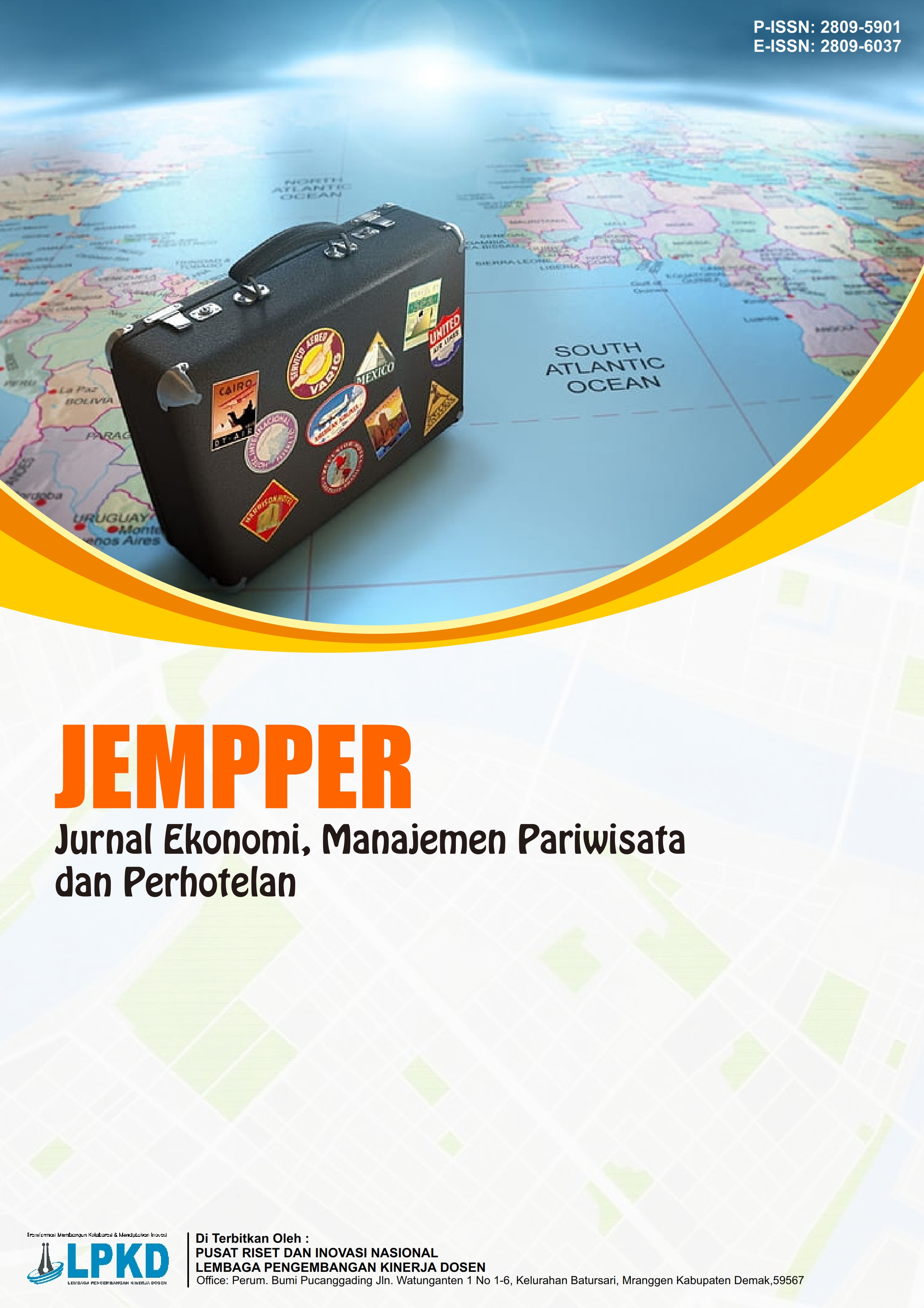Business Strategy Analysis of CleanShipp Lampung Shoe Cleaning Service in Bandar Lampung
DOI:
https://doi.org/10.55606/jempper.v4i2.3998Keywords:
Business Strategy, Cleanshipp Lampung, EFE, QSPM, SWOTAbstract
The lifestyle trend of people who are increasingly aware of fashion, especially regarding shoes, encourages individuals to buy, use and even collect various types of shoes. From this trend, people are increasingly conscious of the care of their shoes, which is why they opt to use professional services to wash and care for them. A descriptive qualitative approach was employed in this study. In the face of escalating market competition, this study aims to analyse and examine the business strategies utilised by the Cleanshipp Lampung shoe wash service in Bandar Lampung. This study identifies the company's internal and external factors that affect business sustainability using the SWOT (Strengths, Weaknesses, Opportunities, and Threats) analysis method, IFE (Internal Factor Evaluation), EFE (External Factor Evaluation), IE (Internal-external) Matrix, and QSPM (Quantitative Strategic Planning Matrix), as well as providing strategic recommendations that can be applied by the company. The research shows that the recommended strategy alternative is to "take advantage of strategic location and quality of service to deal with new competitors". Cleanshipp Lampung can add drop stations to deliver customers' shoes, and can add products such as anti-fungal liquids, and shoe perfumes, and Cleanshipp can also use social media for customer education and still maintain the duration of the work by modernising equipment.
References
Alamanda, D. T., Anggadwita, G., Raynaldi, M., Novani, S., & Kijima, K. (2019). Designing strategies using IFE, EFE, IE, and QSPM analysis: Digital village case. The Asian Journal of Technology Management (AJTM), 12(1), 48–57. https://doi.org/10.12695/ajtm.2019.12.1.4
Amalia, A., Hidayat, W., & Budiatmo, A. (2012). Analisis strategi pengembangan usaha pada UKM Batik. Jurnal Ilmu Administrasi Bisnis, 1(2), 9.
Ben-Abdallah, R., Shamout, M. D., & Alshurideh, M. (2022). Business development strategy model using EFE, IFE and IE analysis in a high-tech company: An empirical study. Academy of Strategic Management Journal, 21(S2), 1–9.
David, F. R. (2017). Management strategies: Organisational behaviour for social work (pp. 119–126). https://doi.org/10.2307/j.ctt1t891zp.14
Indriarti, R., & Rachmawati Chaidir, N. (2021). Penerapan Quantitative Strategic Planning Matrix (QSPM) untuk merumuskan strategi bisnis. Jurnal Manajerial, 20(1), 159–170. https://doi.org/10.17509/manajerial.v20i1.41179
Jannah, R., Anjani, D. M., Puspa, G. R., Garniz, H., Mardani, M., & Hindayani, P. (2023). Manajemen strategis. Jurnal Manajemen dan Pemasaran (JUMPER), 2(1). https://doi.org/10.51771/jumper.v2i1.578
Khoiriah. (2022). Bab III – Metode Penelitian. Metode Penelitian, 32–41.
Kurniawan, L. (2024). Perancangan promosi Kick Out Shoes Care dalam upaya meningkatkan brand awareness. [Unpublished manuscript].
Kustiawati, N., & Hidayat, H. (2013). Matriks internal factor evaluation (IFE) dan external factor evaluation (EFE) buah naga organik (Hylocereus undatus). [Unpublished manuscript].
Kusumaningtyas, A., Susanto, I., & Fathoni, M. Y. (2023). Perumusan strategi bisnis menggunakan metode SWOT dan QSPM dalam bisnis outlet Think Top Drink. Jurnal Terapan Bisnis dan Gastronomi, 2(2). https://doi.org/10.38101/jtbg.v2i2.560
Le, N., Hoang, H., & Nguyen, H. (2022). QSPM matrix-based strategic organizational diagnosis: A case of Nguyen Hoang Group in Vietnam. International Journal of Strategic Management, 10(October), 66–72.
Nuryani, D. A. (2018). Repository Universitas Ngudi Waluyo: Sumber data primer, 01, 1–23.
Osita, I., Onyebuchi, I., & Nzekwe, J. (2014). Organization’s stability and productivity: The role of SWOT analysis—An acronym for strength, weakness, opportunities and threat. International Journal of Innovative and Applied Research, 2(9), 1–12. http://www.journalijiar.com
Pratiwi, N. (2017). Penggunaan media video call dalam teknologi komunikasi. Jurnal Ilmiah Dinamika Sosial, 1, 213–214.
Purwoko, B., Gamal, A., & Kunhadi, D. (2016). The leather industry development in Tanggulangin in facing ASEAN Economic Community (AEC) 2015 with Quantitative Strategic Planning Matrix (QSPM). Archives of Business Research, 4(6), 153–162. https://scholarpublishing.org/index.php/ABR/article/download/2295/2014
Rachmayani, A. N. (2015). Analisis manajemen strategi bersaing dengan matriks IE, matriks SWOT dan matriks QSPM pada PT. XYZ. [Unpublished thesis].
Sari, R. P., Mariam, I., & Sinaga, M. O. (2021). Analisis strategi pengembangan bisnis melalui matriks SWOT pada startup Makananhalal.id. Jurnal Ekonomi dan Bisnis Islam, 18, 630–639.
Suardika, I. K., & Yasa, G. A. (2023). Strategi bisnis usaha mikro kecil melalui analisis SWOT pada usaha dagang di Desa Sari Mekar (studi kasus UD Toya Mertaada). Jurnal Publikasi Ekonomi dan Akuntansi, 3(1), 120–131. https://doi.org/10.51903/jupea.v3i1.505
Sugiyono. (2019). Bab III: Metode penelitian. Jurnal Akuntansi dan Keuangan, 3, 1–9.
Sulasih. (n.d.). Implementasi matrik EFE, matrik IFE, matrik SWOT dan QSPM untuk menentukan alternatif strategi guna meningkatkan keunggulan kompetitif bagi usaha produksi kelompok buruh pembatik di Keser Notog Patikraja Banyumas. Jurnal Ilmu Manajemen dan Strategi Bisnis, 3(1), 27–40.
Triputranto, A. (2020). Pengaruh harga terhadap keputusan pembelian transaksi e-pulsa (studi kasus di Indomaret Sudirman Tangerang). Jurnal Disrupsi Bisnis, 3(2), 1. https://doi.org/10.32493/drb.v3i2.6292
Walukow, M. I. P. S. A. (2015). Analisis faktor-faktor yang mempengaruhi keputusan konsumen dalam pembelian ulang. Procedia - Social and Behavioral Sciences, 211, 688–695. https://doi.org/10.1016/j.sbspro.2015.11.104
Widyastuti, I., Maharani, M., Haryadi, E., & Wijayanti, D. (2024). Pengaruh biaya produksi dan biaya operasional terhadap laba bersih. Journal of Economics and Business UBS, 13(2), 642–661. https://doi.org/10.52644/joeb.v13i2.1578







